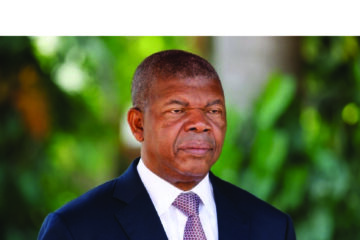When the Governor of the Bank of Namibia, Johannes !Gawaxab, announced that our central bank would begin buying gold from Navachab and B2Gold, it may have sounded like just another technical monetary policy decision. But beneath the surface, this is one of the most consequential financial moves Namibia has made in years. Done right, it can strengthen our financial sovereignty, reduce risks from external shocks, and even open up new opportunities for ordinary Namibians. Done wrong, it could become a costly gamble.
Why Gold Matters
For centuries, gold has been the ultimate symbol of value. In today’s world, central banks keep gold not because they expect to mint coins again, but because it acts as a hedge against volatility. Currencies rise and fall, stock markets boom and bust, but gold has a knack for holding steady value in the long run.
Namibia’s reserves today are heavily dependent on foreign currencies—especially the South African Rand, given our peg to the Rand. This peg provides stability but also ties our fate to the economic winds of our neighbor. By acquiring gold, Namibia is taking a small but meaningful step toward reducing that overreliance. Holding gold equivalent to about three percent of our reserves, as !Gawaxab says, may not sound like much, but it’s a hedge against uncertainty, an insurance policy for the future.
Learning from Others
We are not reinventing the wheel here. Ghana, for example, has pioneered a system where its central bank buys refined gold directly from miners under its Domestic Gold Purchase Programme. Payments are partly made in local currency, which helps ease pressure on foreign reserves. Turkey has gone further, involving refiners and offering partial dollar settlements to balance both local and international needs.
These examples show us that buying gold locally isn’t just about accumulating shiny bars in a vault, it can be designed to also strengthen domestic financial systems and relieve pressure on foreign exchange.
How the Bank of Namibia Could Do It
The Bank of Namibia will likely buy gold that meets international standards set by the London Bullion Market Association (LBMA). That ensures the gold is tradable in global markets if the need ever arises. Whether the gold is refined locally or exported for processing is still up for policy design, but there is a chance here: insist on local refining, and you create a new layer of value addition and jobs in Namibia.
Pricing will probably be pegged to international benchmarks, but there’s room for negotiation. If miners accept partial payment in Namibia dollars, they get liquidity, while the country saves on forex outflows. That’s how Ghana structured its scheme, and Namibia can adapt the model to our own context.
Paying for the Gold
Of course, the question is: how will we pay for all this? The Bank has options. It can dip into existing foreign exchange reserves, though that carries opportunity costs. Another option is innovation, partnering with pension funds and asset managers to create a gold-linked investment vehicle. Imagine Namibian pensioners having their savings partly shielded by gold; it’s a way to align national and personal financial security.
There’s also the possibility of issuing local-currency bonds specifically tied to gold accumulation. Investors would know their funds are being used to build a tangible reserve, and the bank would have a steady stream of financing without draining existing reserves overnight.
Dealing with the Price Rollercoaster
Gold prices don’t move in a straight line. They can soar during crises and dip when the global economy calms. If the Bank of Namibia buys recklessly, it risks overpaying during a spike or seeing its reserves lose value in a downturn. The smart approach is phased buying, small, steady acquisitions tied to export flows rather than one big, headline-grabbing purchase.
There’s also the possibility of using financial instruments like futures or swaps to hedge against big swings. That may sound technical, but it’s really just another word for insurance. Namibia should proceed carefully, ensuring that gold becomes a stabilizer, not another source of volatility.
What the Future Could Hold
While gold is the immediate story, there are bigger possibilities down the road. Once we have a credible reserve base, Namibia could issue gold-backed savings instruments for the public. Imagine buying a government savings bond knowing it’s anchored in gold. That could change how ordinary Namibians see their savings, shifting trust away from cash under the mattress to something more secure.
Some even talk of gold as the first step toward eventually reconsidering our peg to the Rand. That’s a long way off, and not without risks, but the conversation is worth having if Namibia wants true monetary independence in the decades ahead.
Risks and Rewards
Let’s be clear: this move is not without risks. Gold prices could turn against us. Financing could strain the public purse if managed poorly. But the opportunities outweigh the dangers. We not only gain a more resilient reserve system, we also support our local mining value chain and position Namibia in line with global best practices.
There’s also a symbolic power in this. For too long, Namibia has exported raw resources and imported financial products. By holding part of our wealth in gold mined from our own soil, we make a statement: that our natural riches can serve not only foreign markets but our own sovereignty.
A Golden Balancing Act
The Bank of Namibia’s move to buy gold is not about nostalgia or glitter. It’s about pragmatism. It’s about acknowledging that the world is uncertain, currencies are fragile, and resilience matters. If executed with discipline, transparency, and foresight, this strategy could be a turning point in Namibia’s financial journey.
Gold is not a magic bullet. But in measured doses, it can be a golden shield.



